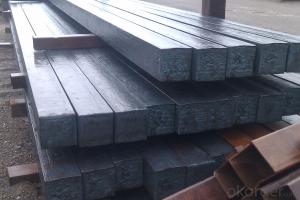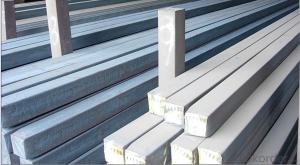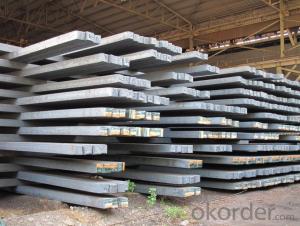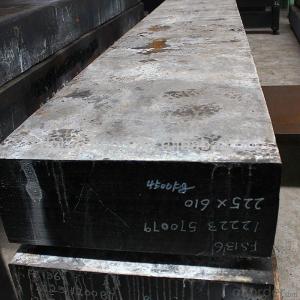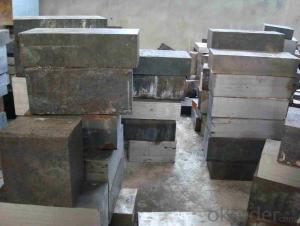Prime quality prepainted galvanized steel 705mm
- Loading Port:
- Tianjin
- Payment Terms:
- TT OR LC
- Min Order Qty:
- 100 m.t.
- Supply Capability:
- 10000 m.t./month
OKorder Service Pledge
OKorder Financial Service
You Might Also Like
Construction building material galvanized color prepainted cold
rolled steel coil
Prepainted steel sheet is coated with organic layer, which provides higher anti-corrosion property and
a longer lifespan than that of galvanized steel sheets.
The base metals for prepainted steel sheet consist of cold-rolled, HDG electro-galvanized and hot-dip
Alu-zinc coated. The finish coats of prepainted steel sheets can be classified into groups as follows:
polyester, silicon modified polyesters, polyvinylidene fluoride, high-durability polyester, etc
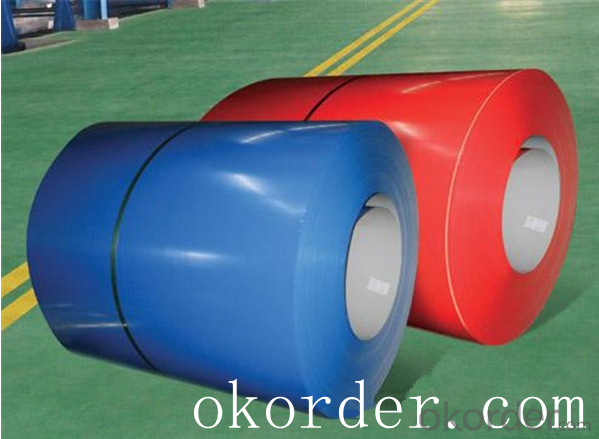
Standard and Grade :
Pre-paint galvanized steel coil | ||||
ASTM A755M-03 | EN10169:2006 | JISG 3312-2012 | ||
Commercial quality | CS | DX51D+Z | CGCC | |
Structure steel | SS GRADE 230 | S220GD+Z | CGC340 | |
SS GRADE 255 | S250GD+Z | CGC400 | ||
SS GRADE 275 | S280GD+Z | CGC440 | ||
SS GRADE 340 | S320GD+Z | CGC490 | ||
SS GRADE550 | S350GD+Z | CGC570 | ||
S550GD+Z | ||||
Application:
Outdoor | Roof, roof structure, surface sheet of balcony, frame of window, door of garage, rolled shutter door, booth, Persian blinds, cabana, etc |
Indoor | Door, isolater, frame of door, light steel structure of house, home electronic appliances, ect. |
Specifications
Commodity Name: Prepainted Galvanized Steel Coil
Standard: AISI, ASTM, DIN, GB, JIS
Grade: TDC52D+Z
Thickness 0.13-8.0mm
Width:600mm-1350mm
Zinc Coating:275g/m2
Polyester Coating Thickness:Top and Back coating thickness depend by Buyer Requirement.
Polyester Coating Type:2/2,1/2m,1/2.
Polyester Type: Polyester, silicone modified polyester, high durability polyester (HDP), polyvinylidene fluoride (PVDF)
Unit Roll Weight:5-20tons
Place of Origin Shanghai , China (Mainland)
Surface Treatment :Color Coated
Manufacture Progress:HRC-CRC-GALVANIZED-COLOR COATED
Application : Construction, electrical, transportation, steel plant, composite board plant, steel tile factory
Payment & Shipping Terms:T/T ,L/C, and FOB CHINA
Minimum Order Quantity: 25Tons
Packge Type: Moisture-proof paper inner,Steel outside,Bundle by steel rope.
Package in Container : Wood as a foot pad, wire rope reinforcement,PPGI steel coil tied together by steel rope.
- Q:What are the factors affecting the price of steel billets?
- The price of steel billets can be affected by various factors. Firstly, the balance between supply and demand plays a significant role. If the demand for steel billets is high and the supply is limited, the price will rise. On the other hand, if the supply exceeds the demand, the price will decrease. Additionally, the cost of raw materials used in the production of steel billets, such as iron ore and coal, can greatly impact the price. Fluctuations in the prices of these raw materials can lead to changes in production costs, which in turn affect the price of steel billets. Furthermore, energy prices have a direct impact on the price of steel billets as their production requires a significant amount of energy. If energy prices increase, the cost of production for steel billets will also rise, resulting in a higher price. Transportation costs also play a role in determining the final price of steel billets. Factors like fuel prices, distance, and transportation infrastructure can impact the costs involved in transporting steel billets from the manufacturing plant to the market, thereby influencing the price. Government regulations and trade policies, such as import/export duties, tariffs, and quotas, can significantly affect the price of steel billets. These policies can restrict or facilitate the movement of steel billets between countries, impacting the supply and demand dynamics and, subsequently, the price. Moreover, fluctuations in currency exchange rates can influence the price of steel billets, as they are traded globally. If the currency in which steel billets are traded weakens against other currencies, the price may increase to compensate for the decreased value of the currency. Lastly, market speculation and investor sentiment can also influence the price of steel billets. Economic indicators, geopolitical events, and investor expectations can drive buying or selling behavior, leading to price fluctuations. It is important to recognize that these factors are interconnected and can interact with each other, resulting in a complex and dynamic market for steel billets.
- Q:Can steel billets be used in the production of energy-efficient appliances?
- Yes, steel billets can be used in the production of energy-efficient appliances. Steel is a versatile and durable material that can be formed into various components of appliances, such as shells, frames, and internal structures. When properly designed and manufactured, steel components can contribute to the overall energy efficiency of appliances by ensuring better insulation, heat distribution, and overall performance.
- Q:How are steel billets used in the manufacturing of construction machinery parts?
- Steel billets are an essential component in the manufacturing of construction machinery parts. These billets, which are semi-finished steel products, serve as the raw material from which various machinery components are formed. To start the manufacturing process, steel billets are first heated to a high temperature in a furnace, which helps to increase their malleability and facilitate further shaping. Once heated, the billets are then passed through a series of rollers and molds to form the desired shape and dimensions. Construction machinery parts such as gears, shafts, axles, and structural components require high strength and durability to withstand the rigorous demands of heavy-duty applications. Steel billets, being made from high-quality steel alloys, possess these desirable properties, making them ideal for manufacturing such parts. After the billets have been shaped, they undergo additional processes such as heat treatment and surface finishing to enhance their strength, hardness, and resistance to wear and corrosion. These treatments further improve the overall performance and longevity of the construction machinery parts. The use of steel billets in the manufacturing of construction machinery parts offers several advantages. Firstly, steel is known for its excellent mechanical properties, including high tensile strength and toughness, which are crucial for handling heavy loads and resisting impact and fatigue. Additionally, steel billets can be easily machined and welded, allowing for precise manufacturing and assembly of complex machinery components. Furthermore, steel is a versatile material that can be customized to meet specific requirements. By adjusting the composition and heat treatment processes, manufacturers can tailor the properties of the steel billets to suit the intended application of the construction machinery parts, ensuring optimal performance and durability. In conclusion, steel billets play a vital role in the manufacturing of construction machinery parts. Their high strength, durability, and versatility make them indispensable in producing components that can withstand the demanding conditions of construction sites. By utilizing steel billets, manufacturers can create reliable and long-lasting machinery parts that contribute to the overall efficiency and safety of construction projects.
- Q:How are steel billets used in the production of molds?
- The production of molds relies heavily on steel billets, which act as the primary material for creating the mold itself. The initial step involves the selection of a suitable steel billet, typically a solid rectangular or square piece of steel. Once chosen, the steel billet undergoes a series of manufacturing processes to transform it into a mold. Initially, the billet is heated to a high temperature referred to as the forging temperature. This heating process is crucial as it enhances the malleability of the steel, making it easier to work with and shape according to the desired form. Following the heating process, the steel billet is subjected to various shaping techniques, including rolling, pressing, or hammering. These techniques aid in shaping the steel into the desired mold design, which can range from simple to complex, depending on the intended application. Upon achieving the desired shape, the steel billet is cooled down and further refined through processes such as machining, grinding, and polishing. These additional processes ensure that the mold's surface finish and dimensional accuracy are refined, resulting in a precise mold capable of producing high-quality products. In summary, steel billets serve as the foundation material in the production of molds. Through shaping and refining processes, customized mold designs are created. These molds find application in diverse industries such as automotive, aerospace, and manufacturing, where they are utilized to manufacture a wide range of products.
- Q:How are steel billets rolled into shape?
- Steel billets are rolled into shape by passing them through a series of rolling mills, where they are subjected to high pressure and temperature. The billets are first heated to a specific temperature to make them more malleable. They are then continuously passed through multiple sets of rollers, which gradually decrease the thickness and increase the length of the billet. This process, known as hot rolling, helps shape the steel billets into various forms such as bars, rods, or sheets.
- Q:What are the potential applications of steel billets in the agricultural sector?
- Steel billets have a wide range of potential applications in the agricultural sector. One of the primary uses of steel billets in agriculture is for the manufacturing of farm equipment and machinery. Steel billets can be used to produce durable and sturdy components such as plows, cultivators, and seeders, which are essential for tilling the soil, planting seeds, and maintaining agricultural land. Steel billets can also be utilized in the construction of storage structures on farms. Steel is known for its strength and durability, making it an ideal material for constructing grain silos, barns, and sheds. These structures provide farmers with a reliable and long-lasting solution for storing crops, livestock, and equipment. In addition, steel billets can be used to fabricate fences and gates for animal enclosures. Steel fences offer superior strength and security, ensuring the safety of farm animals and preventing them from wandering off. These fences are also resistant to corrosion and are capable of withstanding harsh weather conditions. Furthermore, steel billets can be employed in the construction of irrigation systems and water management infrastructure on farms. Steel pipes and fittings are commonly used to transport water from a source to the fields, ensuring proper irrigation and efficient water distribution. Lastly, steel billets can be utilized in the production of machinery used for processing agricultural products. For example, steel components can be used to manufacture grain mills, threshers, and sorting machines, which aid in the processing and packaging of crops. Overall, the potential applications of steel billets in the agricultural sector are vast and varied. From farm equipment and storage structures to fencing and irrigation systems, steel billets play a crucial role in enhancing efficiency, durability, and productivity in agriculture.
- Q:How are steel billets used in the production of seamless pipes?
- Steel billets are heated and then pierced to form a hollow tube, which is then elongated and rolled into a seamless pipe. The billets serve as the starting material for the production of seamless pipes, providing the necessary shape and strength required for the manufacturing process.
- Q:What are the different types of defects that can occur during steel billet production?
- There are several types of defects that can occur during steel billet production. Some common defects include surface cracks, internal voids or inclusions, segregation, surface roughness, and dimensional deviations. Surface cracks can occur due to improper cooling or handling, while internal voids or inclusions can be caused by impurities in the raw materials. Segregation refers to uneven distribution of elements within the billet, leading to inconsistent properties. Surface roughness can result from inadequate surface preparation or poor rolling conditions. Dimensional deviations can occur due to improper alignment or adjustment of the equipment.
- Q:What are the different types of surface defect detection equipment for steel billets?
- There are various types of surface defect detection equipment available for steel billets. These equipment are designed to identify and analyze defects on the surface of steel billets, ensuring that only high-quality products are used in various applications. Some of the different types of surface defect detection equipment for steel billets include: 1. Ultrasonic Testing (UT): UT equipment uses sound waves to detect surface defects in steel billets. It emits high-frequency sound waves that penetrate the material and reflect back when they encounter any surface irregularities. This method helps identify cracks, voids, and other defects on the surface. 2. Eddy Current Testing (ECT): ECT equipment uses electromagnetic induction to detect surface defects in steel billets. It works by passing an alternating current through a coil, generating a magnetic field that interacts with the conductive material of the billet. Any surface defect or irregularity will cause a change in the magnetic field, which can be measured and analyzed. 3. Magnetic Particle Inspection (MPI): MPI equipment uses magnetic fields and iron particles to detect surface defects in steel billets. The billet is magnetized, and iron particles are applied to its surface. These particles will gather around any surface defect, creating visible indications that can be easily identified and evaluated. 4. Visual Inspection: Visual inspection equipment involves the use of cameras, lasers, and other optical devices to detect surface defects in steel billets. These devices capture images or videos of the billet's surface and allow inspectors to identify any irregularities or defects visually. 5. Thermographic Testing: Thermographic equipment uses infrared cameras to detect surface defects in steel billets by measuring the temperature variations. Any defect will cause a difference in heat transfer, resulting in distinct thermal patterns that can be detected and analyzed. 6. X-ray Inspection: X-ray inspection equipment uses X-ray radiation to penetrate the steel billet and detect internal and surface defects. It provides detailed images that allow inspectors to identify cracks, voids, and other defects that are not visible to the naked eye. Overall, these different types of surface defect detection equipment for steel billets offer a range of methods to ensure the quality and integrity of the billets, enabling manufacturers to deliver high-quality steel products to various industries.
- Q:How are steel billets used in the manufacturing of fasteners and fittings?
- Steel billets are used in the manufacturing of fasteners and fittings as they serve as the raw material from which these components are produced. These billets are heated and then shaped using various processes such as forging, extrusion, or machining to create the desired shape and size of the fasteners and fittings. The steel billets provide the necessary strength and durability required for these components to withstand the forces and loads they will encounter in their applications.
1. Manufacturer Overview |
|
|---|---|
| Location | |
| Year Established | |
| Annual Output Value | |
| Main Markets | |
| Company Certifications | |
2. Manufacturer Certificates |
|
|---|---|
| a) Certification Name | |
| Range | |
| Reference | |
| Validity Period | |
3. Manufacturer Capability |
|
|---|---|
| a)Trade Capacity | |
| Nearest Port | |
| Export Percentage | |
| No.of Employees in Trade Department | |
| Language Spoken: | |
| b)Factory Information | |
| Factory Size: | |
| No. of Production Lines | |
| Contract Manufacturing | |
| Product Price Range | |
Send your message to us
Prime quality prepainted galvanized steel 705mm
- Loading Port:
- Tianjin
- Payment Terms:
- TT OR LC
- Min Order Qty:
- 100 m.t.
- Supply Capability:
- 10000 m.t./month
OKorder Service Pledge
OKorder Financial Service
Similar products
New products
Hot products
Related keywords

